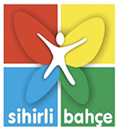Montessori Method represents a totally different approach to education. When Montessori and traditional methods are compared, it is clearly seen that there are lots of differences in between them.
In the following, you can explore some of them.
| Traditional Education | Montessori Method | Evaluation |
| Children learn by “rote learning”. | Children learn “how to learn”. | Children who learn by rote learning memorize. Therefore, they forget easily. On the other hand, Montessori children develop learning strategies and they can manipulate the incoming data by what they have already learned. This is known as the mastery over knowledge. |
| Teachers direct children’s learning process. | Children learn by themselves. | Learning is an individual process, which is directed by the children. Teachers may contribute the learning process but indeed learner is the child. |
| Children obey external discipline. | Children develop self-discipline. | Children, who are forced to obey external discipline, change their behavior when the source of discipline does not exist in the surrounding. However, self-discipline exists independent of an external discipline source once it has developed. |
| Children should follow a syllabus. | Children learn at their own, individual pace. | In traditional education, children learn by following a predetermined pace directed by the syllabus. If some has need more time to learn or completed the subject early than the others, they have to obey the teachers’ timetable. This is a method that does not give any interest or attention to the children’s individual differences. But Montessori Method follows the child; therefore every child develops without feeling insufficient or bored. |
| Children study the subject determined by the teacher. | Children study the subject that they choose. | Children, who study the subject that they are interested, progress much more faster. Scientific findings tells that children that work with the subject they have interested show considerable amount of success than the ones that don’t have an interest on the subject they are studying. |
| Teacher determines the span of learning. | Child determines her/his span of learning. | In traditional education, teacher is the dominating character that determines the content and pace of learning. In the Montessori Method the director is the child and s/he determines her/his own pace. |
| Abstract concepts are introduced in an abstract form. | Abstract concepts are introduced in a concrete form. | Although concepts as mathematics are abstract, preschool children learn numbers, addition, subtraction and a number of abstract operations of mathematics. But it is known that brain’s abstract operation systems does not begin to develop before the age of seven, therefore it is almost impossible to present concepts that are abstract in nature to preschool children. In the Montessori Method there are concrete materials to teach abstract concepts that make a lot of difference in children’s learning process, which leads to successful learning without dispute. |
| Teacher approves and evaluates the process of learning. | Children are promoted for self-evaluation. | Children who had traditional education are dependent on teacher’s approval and evaluation. But Montessori Children, who do not need external approval, are the master of their knowledge and much more ready for progress. |
| Learning materials are not suitable for the stimulation of sensory organs. | Learning materials are designed for stimulation of multiple senses. | Montessori materials are designed to teach abstract concepts in a concrete form by stimulating multiple senses. |
| There is no age appropriate assessment method for ages 2 – 6. | Children’s developmental assessments are done by observation accurately. | Children’s needs are ignored in traditional education since there is no age appropriate developmental assessment method. On the other hand, in the Montessori Method children’s progress can be continuously observed and guided by both teachers and children. |


 Türkçe
Türkçe